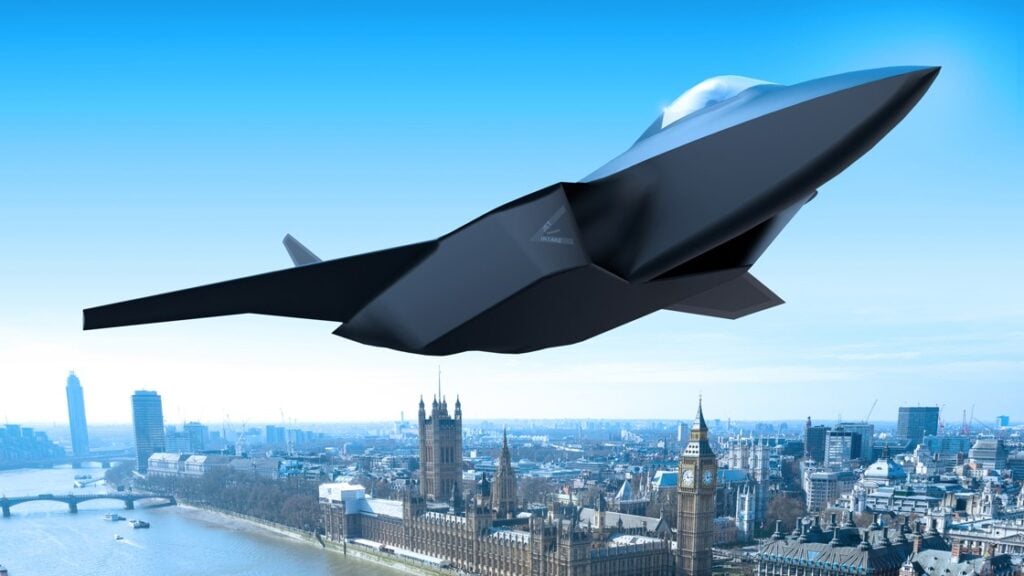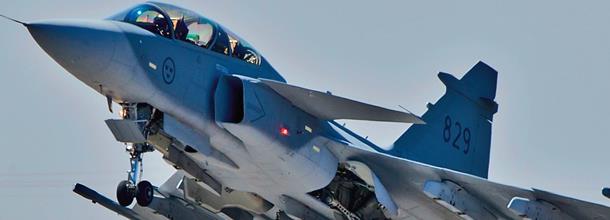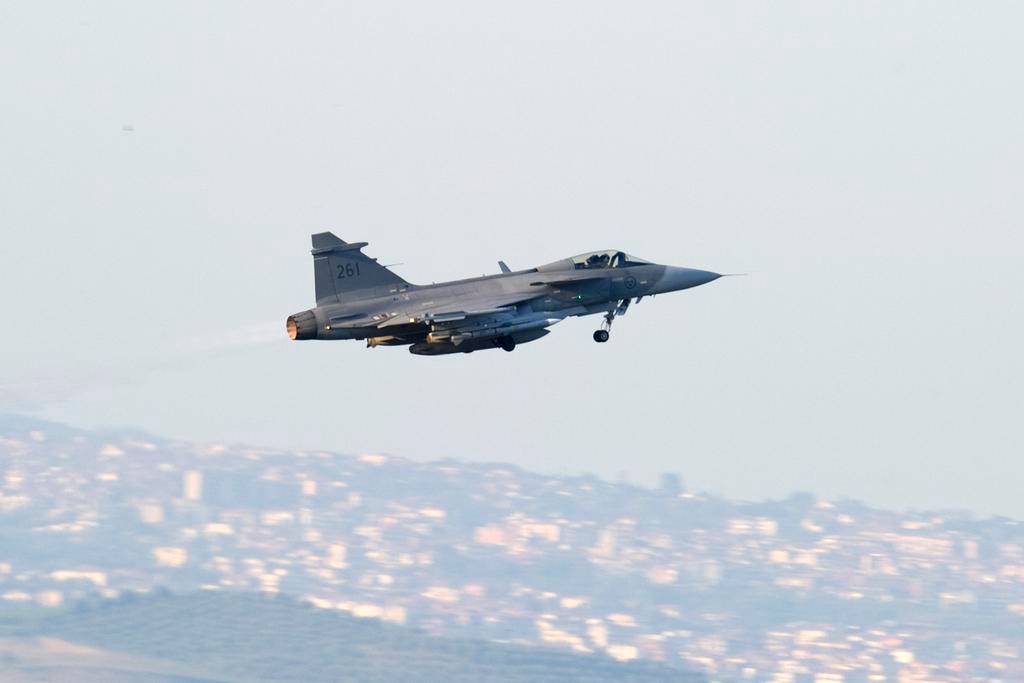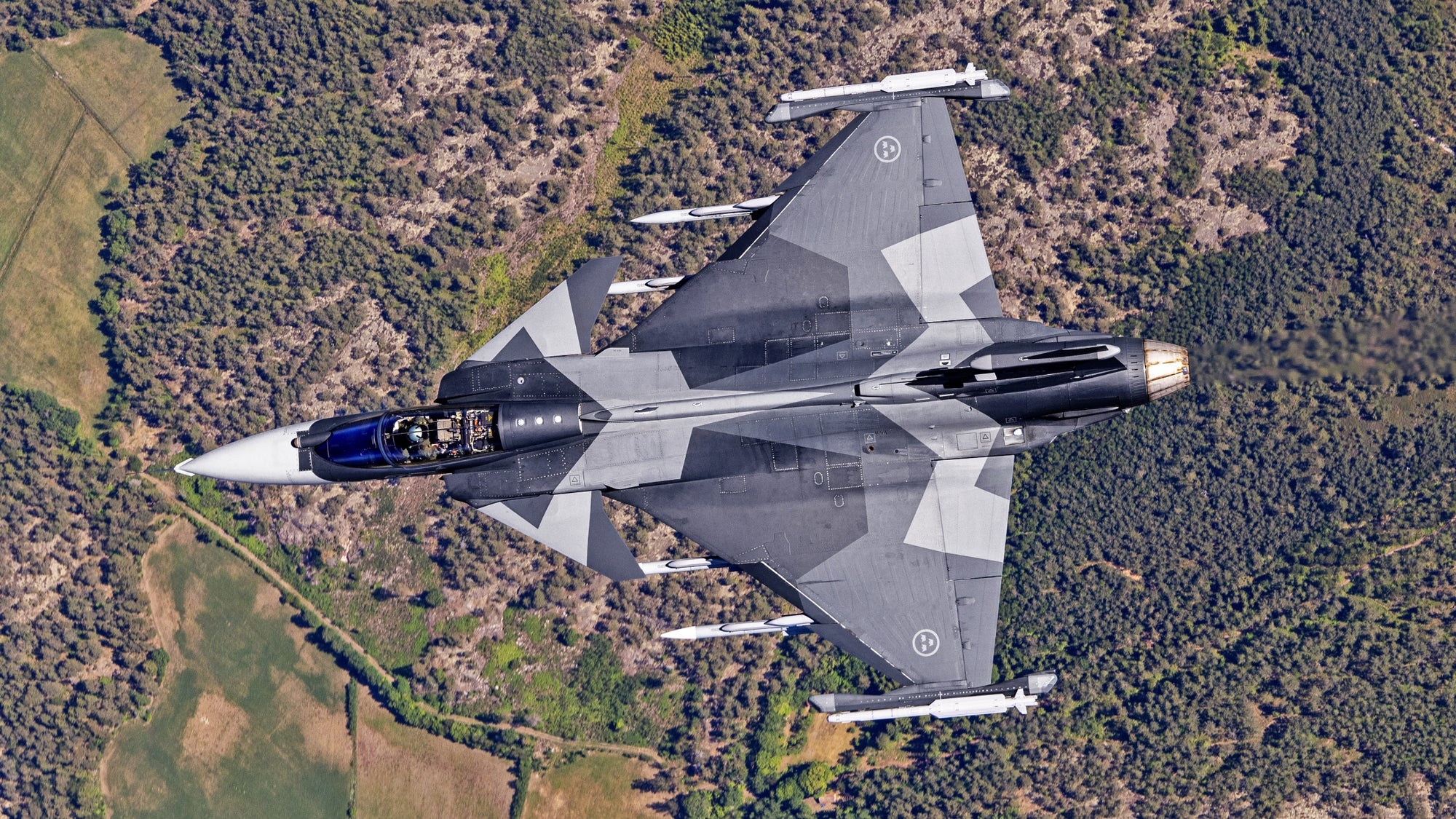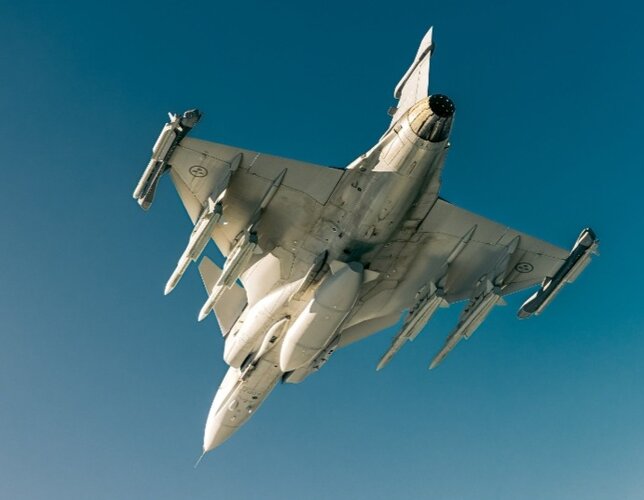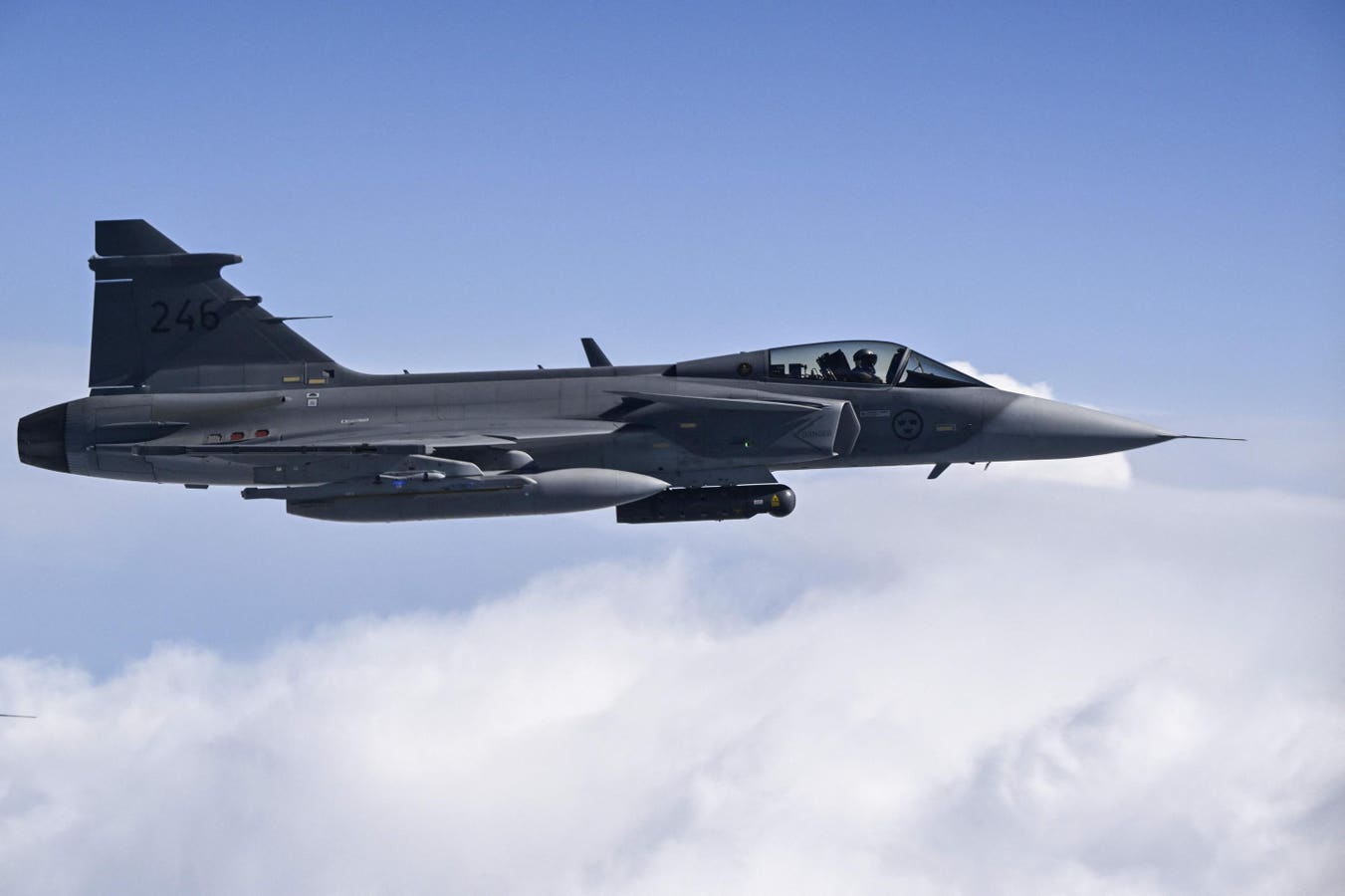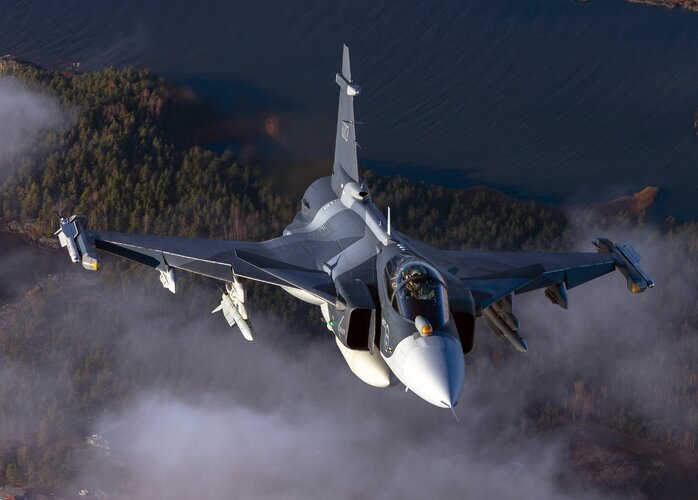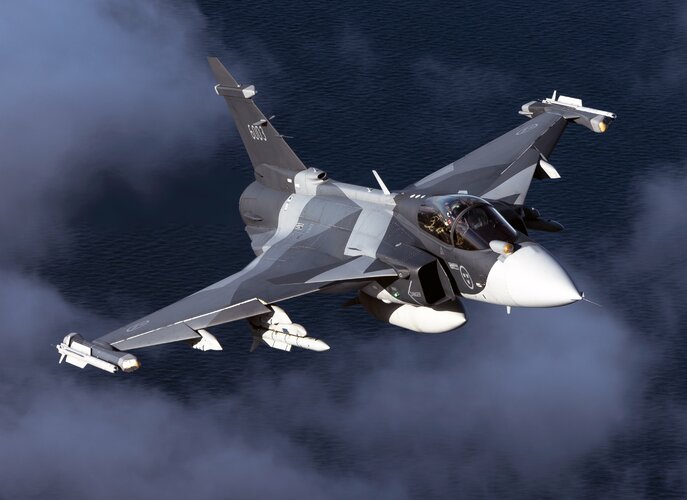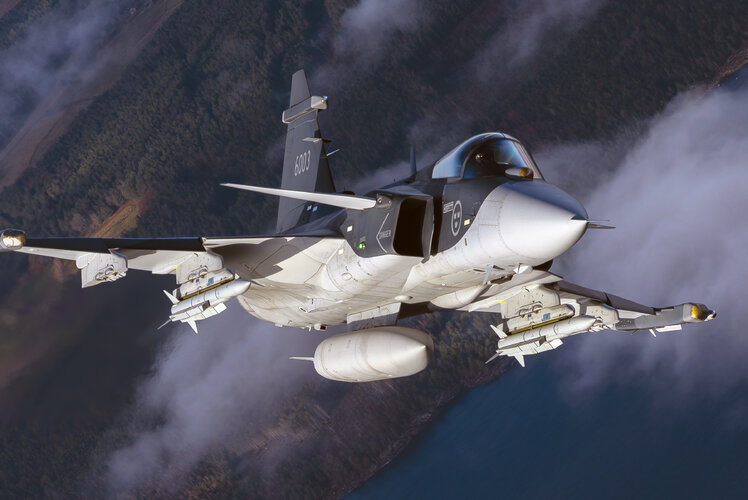Yeah, but then it's still not right to list F-2 alongside other fighters you've mentioned and categorize it the same way.
That's fair. F-2 has an indigenous combat computer, fire control radar, airframe, and probably the majority of other components, at least excluding the engine. Major electronic and battle systems of F-CK-1 and Lavi were export controlled by the U.S. at the end of the day. I suppose it would be about as indigenous as Viggen in that case.
Gripen is less "indigenous" than Viggen because the radar is export controlled by Britain, whereas I think Viggen's radar had no such foreign elements, but that would be a question for lawyers ultimately.
Though what they would've thought as a known quantity, and their market expectations, doesn't neccesarily correspond to the reality. That's why market analysis is not an oracle. In the actual world it was rather the case that F-16 won over most potential markets Saab hoped to sell Gripen. This was even more so the case when Gripen E/F faced off F-16V. More importantly, F-35 was not even a same class of fighter to begin with, less so the same generation, as it would be very obvious to you as well.
It doesn't need to be the same generation, it merely needs to be available around the same time period, which it was. Gripen began taking orders around the same time as JSF, and when compared to F-16 or F/A-18C, it had little to bring to the table besides it being physically small. Great for Sweden, bad for anyone else, besides South Africa and the Brazilians I guess.
Saab was just desperate to make up canceled Flygvapnet orders in the 1990's, when those orders probably shouldn't have been canceled, because they were key to Saab seriously moving forward. They kind of managed this, but only after running around the world, wasting money on failed bids, and even then it was just barely approaching what the Flygvapnet's initial order was (~180 airframes?), as of the mid-2010's.
If the original orders had been optioned, Saab would have had something between 200-300 Gripens by the mid-2000's instead. Many more aircraft and much sooner. This could have let them continue development on a future fighter instead.
Them being historical customers doesn't necessarily mean that they will stay one. Denmark is also JSF level 3 partner. More importantly, SAAB lost out in new markets and there they've lost to F-16s and Rafales. That should be a clear indication of what the market expects and what's "wrong" with Gripen.
I think it's more to say that the Swedish government and Saab both should have anticipated very few export orders, based on historic evidence, and the FMV and Parliament should have continued development and funding based solely on the assumption that the majority of airframes produced would necessarily need to be domestic orders. Going from ~200 airframes to ~75 is a big gap in revenue.
This leads Saab to rapidly scramble for any and all exports it could manage, which turned out to be less than the planned airframe numbers anyway, over a period of time several years longer than initially anticipated. Ideally you'd have both the exports and the domestic airframes, but the Swedish government can only control how many planes it's going to buy, not how many other people will buy. This is why FS 2020 died stillborn as a series of studies, rather than serious construction of laboratory hardware and RCS test stands.
The first proper FS2020 period was defined by seeking Turkish support in the TAI TFX. It kind of worked but Turkey shut the door fast.
Başbakan Erdoğan'ın "Görüşün, değerlendirin" talimatıyla harekete geçen özel bir teknik ekip, İsveç'e giderek, mali sıkıntıdaki SAAB ile görüşme yaptı
web.archive.org
The second FS2020 period was defined by seeking Japanese (and British) support in the GCAP. Which worked about as well as Italy's initial attempt did. Now it's unclear if there will be a third chance, especially given Boramae is finished, but the door is still open for GCAP in some form. Just not a form that Saab would be happy with.
Also, the reason there wouldn't be much ways for Sweden to possibly contribute for GCAP wouldn't be because their aerospace industry is "dead", imo. It shrunk, surely, but that is different from it being "dead".
When I say "dead", I mean "the difficulties in moving past Gripen are less than the difficulties in merely staying the course".
Perhaps "stuck" is a better term? I'm not sure there's a difference for a business whose job is to sell products, though.
The difficulties the Russian aviation industry faces in moving into proper 5th generation aircraft territory are perhaps equally insurmountable as Saab's, given how big Su-57's panel gaps are. That said, I don't think anyone would describe Sukhoi as a particular hotbed of aviation ingenuity at the moment. Same deal with Saab.
If there are any choices at all, the Swedish government is looking at sticking to its guns and continuing Gripen upgrades for the foreseeable future, funding a small unit of JSFs, GCAPs or similar 5th generation fighter to provide modern aviation capacities to the Flygvapnet (eventually, it will be necessary), or developing a indigenous stealth fighter akin to FS 2020 with imported engines. Of those three choices moving forward, one is decidedly less palatable than the other two, given the post-Cold War history of the Swedish arms industry, one is a fantasy worthy of old techno-thriller novels, and the government has already convinced itself the first one is the cheapest of the options.
Sverige behöver minst 60 stridsflygplan av den kommande så kallade Super-Jasmodellen.

web.archive.org
Sweden needs at least 60 combat aircraft of the upcoming so-called Super-Jas model.
This was emphasized by the Swedish Armed Forces in a public hearing in the Riksdag today.According to Lieutenant General Jan Salestrand, it is a minimum.-Sweden needs 60-80 combat aircraft to meet the technical and operational threat picture, said ÖB Sverker Göranson.The Ministry of Defense's State Secretary Carl von der Esch stated that the total cost per year for the system is estimated to be three billion from next year, i.e. a total of SEK 90 billion.
Of the repository's total material allocation 2013-2042 of around SEK 400 billion, it is estimated that 75 billion will be used by Super-Jas. The calculations are based on 60 plans.The armed forces also gave an account of the alternatives that were examined before the decision was made to recommend 60-80 planes of the E-model. Keeping the current 100 planes of the C/D model would cost a total of SEK 60 billion until 2042. Buying 60 foreign planes would cost SEK 110 billion.
However, according to the Swedish Armed Forces, the current C/D model would not fare very well against the plans that can be expected to be encountered in the 2020s and 2030s.- It would have been shot down before it even saw anything, said Lars Hemrich, lieutenant colonel in the air force.
The upgrade to the E-model is estimated to increase the Gripen plane's time in the air and capacity to carry weapons by 50 percent, among other things.The government has requested a mandate from the Riksdag to buy 40-60 planes. The decision is made in December. If the number becomes 60, according to ÖB, the air defense must be supplemented with, for example, more ground-based air defense.
The armed forces could not explain in more detail what other investments are needed and what they would cost if the number of Super-Jas, the so-called E-model of the Jas 39 Gripen, becomes 60.
The first Super-Jas planes are expected to be operational from 2023 and used until 2042.
Super JAS is the colloquial name for the -E/F Gripens. The Swedish government has managed to convince itself this is a better option than importing a similar number of JSFs, and for supporting Saab at its present stasis since 199X, it's fine. For now, this is the plan: buy more Gripens and let Saab figure out the rest. It could change, of course, but it would take an immense amount of sustained effort and money to make FS2020 happen at this point.
Italy managed to reverse course sharply, but the Swedish government has limited interest in this, at least so far. I suspect Italy joining GCAP as a major partner may have been the door shutting in Saab's face with regards to learning how to figure out how to make a VLO fighter.
It would rather be due to the fact that the overarching Anglo-Japanese capabilities are pretty much complete in terms of what you need to build a fighter jet. With 3 partners still undecided of workshare details and possibilities of major hiccups remaining, I don't see a room for another major partner. Though this is different from saying that Sweden has nothing to bring to the table.
No, Sweden could definitely bring something to the table, mainly in the form of weapons development and export oriented datalinks or something. Bofors, Ericsson and Saab certainly have things to offer in this regard.
The problem is that Saab (not "Sweden") is looking at GCAP, and previously TFX, as learning opportunities to discover how to make a stealth aircraft. Between JSF's present total victory in the F-16 operator space, and GCAP's (likely) replacement of both export F-15/F-15E and Typhoon airframes, there's not a lot of serious opportunities for Saab to learn how to make 5th gen aircraft from friendly foreign nations though. Which is what they want, really, they want someone to show them how to do it, so they don't have to beg the FMV for a new RCS lab and cross their fingers with the hope the Royal Diet funds everything.
Because being honest, it's not like the Royal Diet is going to fund a RCS testing facility and +15 year development program into aerostructures and radar reflection research, and it's not like Saab has that kind of internal revenue anyway. That ship sailed in the early 1990's with the 204 initial Gripen orders, but that's what it would take to move beyond Gripen indigenously, since that's what the British did with Replica.
If Saab were to enter as a major partner, I suspect its main "demand" would be to have a composite aerostructures lab and RCS testing facility, so it can figure out how to put the panels very close together so they don't make the porcupine too spiky, and possibly a minor portion of base airframe orders, but with multiple panels.
It probably wouldn't be able to negotiate even that, though, without significant investment from the Swedish government itself.


